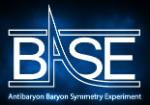Max Planck Society (MPG) via the Max Planck Institute for Nuclear Physics (MPIK)
Sympathetic Cooling of Antiprotons
Trainee: Markus Wiesinger
Supervisor: Stefan Ulmer and Klaus Blaum
The advances in laser cooling of trapped ions with precision (anti)proton spectroscopy and antihydrogen ground state hyperfine splitting spectroscopy will be combined in this project to perform stringent tests of CPT invariance.
Sympathetic cooling of antiprotons will be achieved by coupling them to laser-cooled ions. This shall provide the coldest antiprotons ever observed and will improve both sampling rate and precision in single antiproton spectroscopy by orders of magnitude. A technique to cool particles without optical spectra by resonant coupling of the particles to laser-cooled ions will be developed, based on a proposal by Wineland and Heinzen, targeting exchange times of motional energies on sub-s time scales.
The advances in laser cooling of trapped ions with precision (anti)proton spectroscopy and antihydrogen ground state hyperfine splitting spectroscopy were combined by the Fellow to perform stringent tests of CPT invariance. He carried out R&D into Sympathetic Cooling of Antiprotons which was achieved by coupling them to laser-cooled beryllium ions.
Working closely with CERN, RIKEN, and GSI, a new Penning-trap apparatus for sympathetic cooling of protons was designed, installed and commissioned. A cryogenic switch to decouple the trapped ions from the resistive detection system during coupling to each other was developed and tested. This will allow cooling down single protons and antiprotons to the temperature of Doppler cooled beryllium ions, much lower than the temperature of the resistive detector at 4 K and will lead to the coldest protons and antiprotons ever observed. Experiments paving the way for low temperature coupling of protons to beryllium ions have been carried out, coupling these via the resistive detection system. His work will constitute a considerable upgrade of the BASE experiment
The project constituted a considerable upgrade of the CERN’s BASE experiment. This involved work on cryogenic trap design and laser physics with a focus on the application of the technique to cool antiprotons sympathetically by laser-cooled ions.
